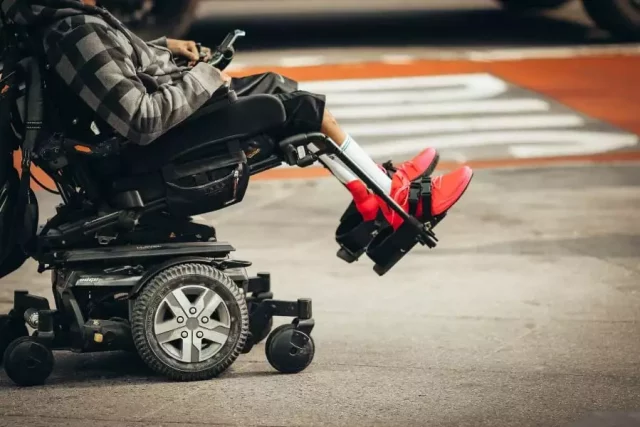Technology has created enormous opportunities for those with disabilities to engage in the world. It does things that were once consigned to a life of limitation and exclusion. Unfortunately, while technological advances have been made over the years, there is still an incredible lack of awareness when it comes to how people with different types of disabilities can use these tools.
As such, this blog post will look at some common examples of disability and examine how technology can empower people by providing greater access, autonomy, communication options, safety measures, and more. Moreover, it will offer up advice on how disabled users can develop their skills further so they can take advantage of all that’s out there.
By understanding these use cases better – whether you are currently managing a disability or know someone who does – then everyone should be able to find the right type of personalized technology solution that meets their individual needs.
Introducing Assistive Technology for People with Disabilities
Assistive technology has the power to improve the lives of people with disabilities significantly. From smartphones equipped with voice recognition software to dynamic prosthetic limbs, technology has opened up a world of possibilities for individuals who may have once felt limited in their abilities.
With the help of assistive technology, people with disabilities can communicate more efficiently, access information, and navigate physical spaces with greater independence. As advancements in technology continue to be made, the options for assistive devices and adaptations continue to grow, offering more hope and opportunity for those who need it most.
One example is accessibility overlays. These software tools are applied to existing programs and apps to make them more accessible for individuals with disabilities. For instance, an overlay can make a website or app more friendly to those who use screen readers, providing alternative audio descriptions when standard text may not be readable.
Accessibility overlays can also offer users with colorblindness options to adjust the color scheme of a page and offer audio cues for those who are hard of hearing. To learn more about accessibility overlays and other assistive technology, look up some great resources that are available on the web. The vital thing to note is that these solutions are personalized, so they need to be tailored to the individual’s needs.
Another example is smart home technology. Innovative home technologies make it possible for people with disabilities to control lights, appliances, door locks, and other household items using apps on their smartphones or voice command devices such as Amazon Echo and Google Home. Smart home technology also allows users to set automated reminders, so they don’t have to worry about forgetting tasks or appointments. Additionally, smart home technologies provide added safety features such as motion sensors that can alert a caregiver if there’s been unusual activity in the home.
Exploring Accessibility Options In Different Devices And Programs
In today’s technology-driven world, ensuring everyone has equal access to technology is essential. Fortunately, there are many accessibility options available in different devices and programs that make technology accessible to individuals with disabilities. From high-contrast displays and screen readers to magnifiers and speech recognition software, many options cater to different needs.
Whether modifying font size or accessing a computer through voice commands, these features enhance user experience and empower individuals to navigate technology independently. So, the next time you’re browsing your device or working on your favorite program, take a moment to explore the accessibility options available to you. You never know how they might make a difference in someone’s life.
Enhancing Communication with Augmentative & Alternative Communication Systems
Communication is a vital aspect of everyday life, and it can be challenging for some individuals to express themselves effectively. Fortunately, technology has provided a solution with augmentative and alternative communication systems. These systems are designed to aid people who have difficulties communicating verbally by giving various options for communication, including gestures, symbols, and images.
Augmentative and alternative communication systems have proven to be revolutionary in helping people with communication issues and improving their quality of life. With the assistance of these systems, individuals who once felt isolated and struggled to communicate are now able to interact with others more effortlessly. By enhancing communication, these systems have opened up new possibilities for individuals to gain more confidence and independence in their daily lives.
Utilizing Specialized Software To Improve Mobility And Dexterity
Advancements in technology have allowed people to take advantage of specialized software to enhance their everyday lives. Specifically, those who struggle with mobility and dexterity can benefit from these innovative tools. These software programs offer a range of features, including customized controls and voice recognition, making it easier for individuals to navigate once-challenging tasks.
The ability to utilize advanced software has been life-changing for many, empowering them to feel more independent and confident in their abilities. With further development and implementation, the potential for improved mobility and agility is endless.
Leveraging Adaptive Input Devices For Computer Use
Have you ever struggled to find a comfortable position for your hands while typing on your computer? Or maybe you have experienced discomfort and pain from repetitive strain injury from using a traditional keyboard for long periods.
These are common problems, especially for people with disabilities. The solution to these challenges may be leveraging adaptive input devices for computer use. These devices are designed for the user’s comfort and convenience, allowing for a customized experience that suits their unique needs and preferences.
From ergonomic keyboards and trackballs to speech recognition software and eye-tracking devices, there are a variety of options to explore for a more comfortable and efficient way to interact with your computer. With adaptive input devices, you can reduce discomfort and increase productivity while enjoying a personalized computing experience.
Taking Advantage Of Online Resources And Support Networks
In today’s technology-savvy world, endless resources and support networks are available online to help disabled individuals learn and grow confidence online. Whether you’re trying to advance your career, improve your mental health, or learn a new skill, the internet offers a wealth of information and resources.
Utilizing online resources and support networks can be a game-changer for many individuals with disabilities. With just a few clicks, you can connect with like-minded individuals, access classes or tutorials, or find insightful articles and videos that can help you achieve your goals.
So, whether you’re looking to connect with a community of people who share your interests or need guidance from professionals, take advantage of the many fantastic online resources and support networks available to you.














